This document summarizes research on reconfigurable intelligent surfaces (RIS)-assisted wireless networks. It discusses three key areas:
1. RIS research in the physical layer, including developing a practical phase shift model, channel estimation techniques, and a hybrid beamforming architecture.
2. Investigating the use of RISs in the medium access control (MAC) layer through protocols for multiple uplink communications, multi-pair aerial-terrestrial communications, and intelligent spectrum learning.
3. The challenges of MAC design for RIS-assisted wireless networks, such as reducing complexity, avoiding transmission collisions, and jointly optimizing RIS configuration and MAC parameters. Distributed and learning-based MAC protocols are proposed to address
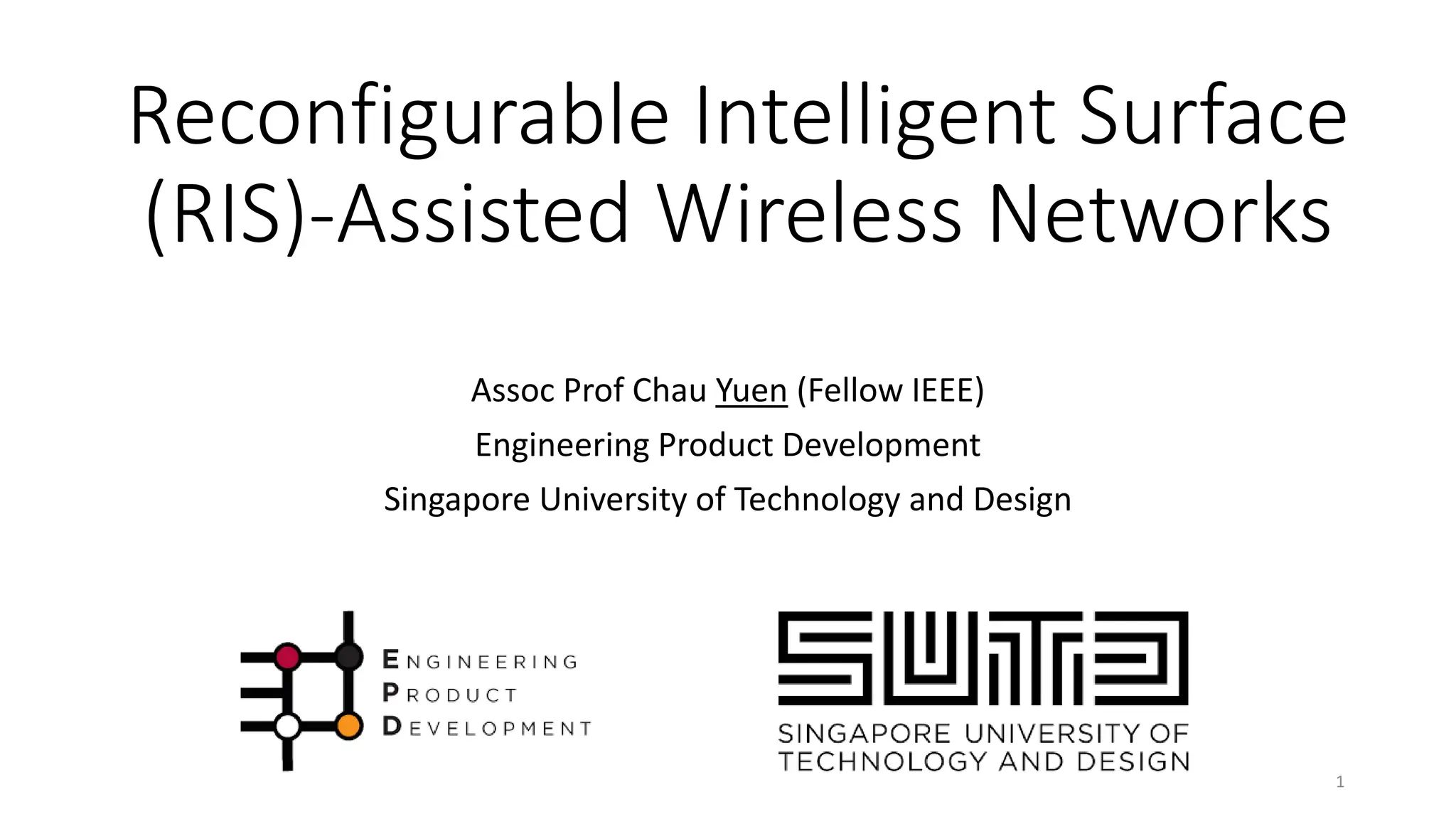
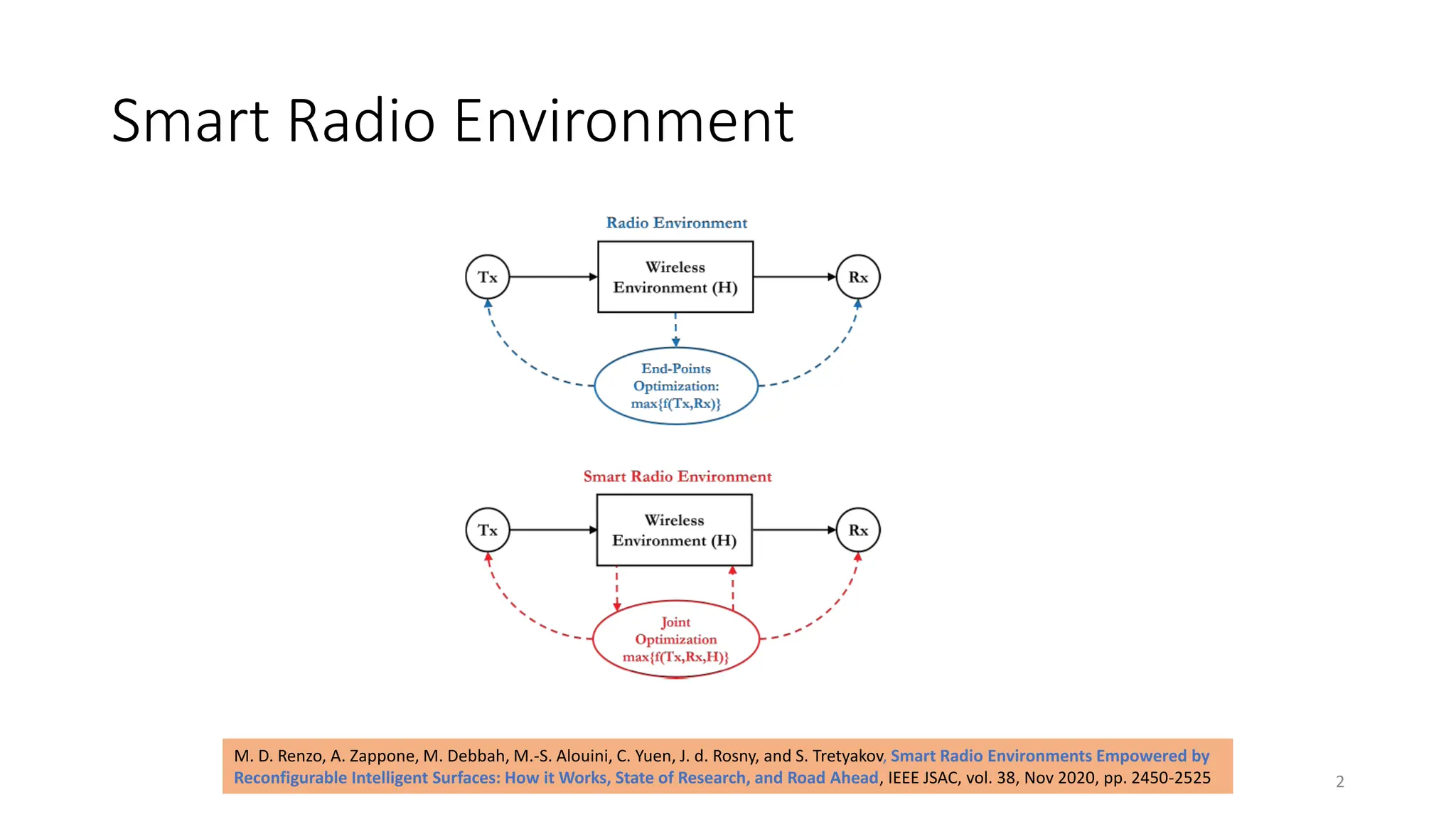
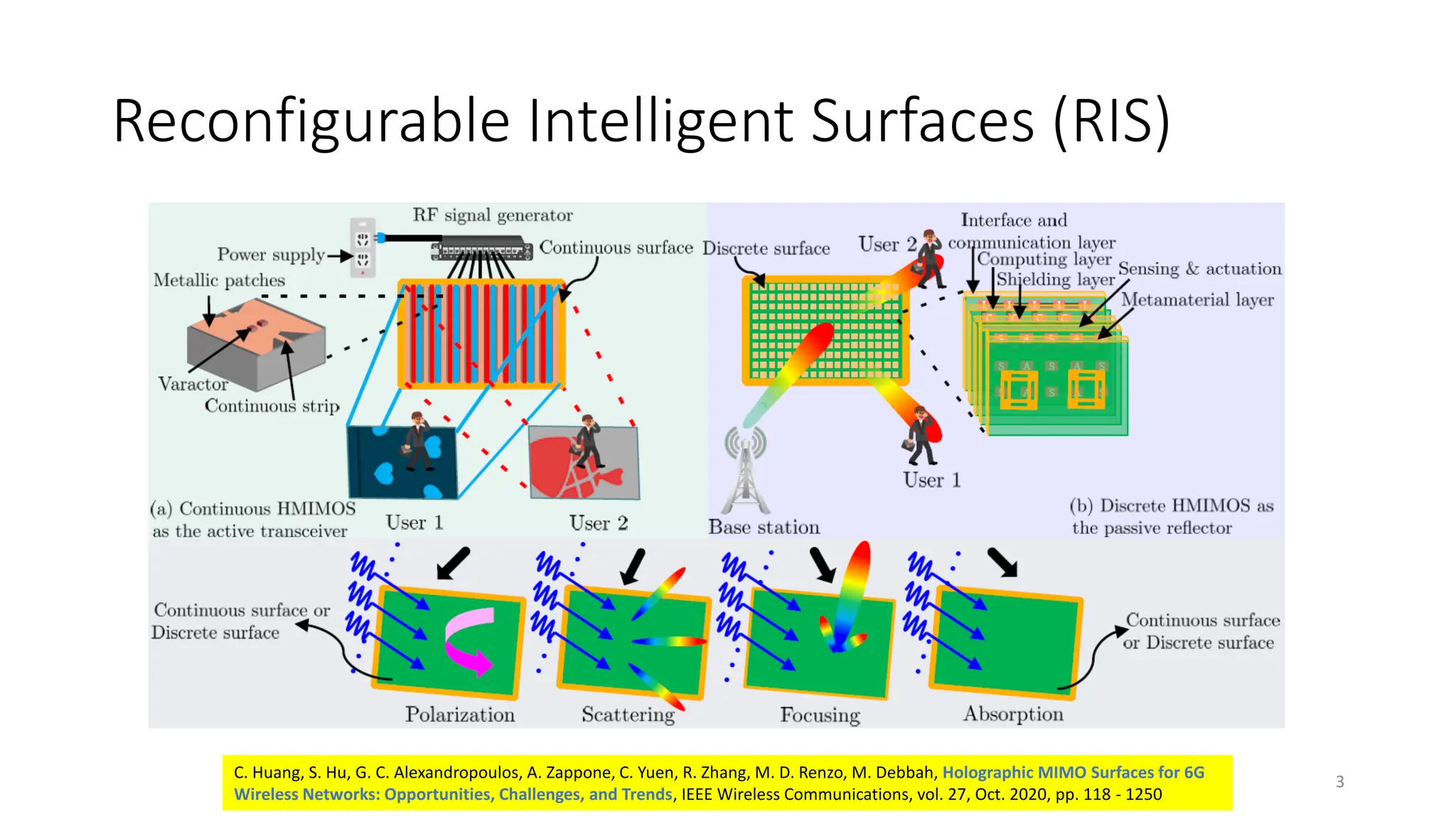
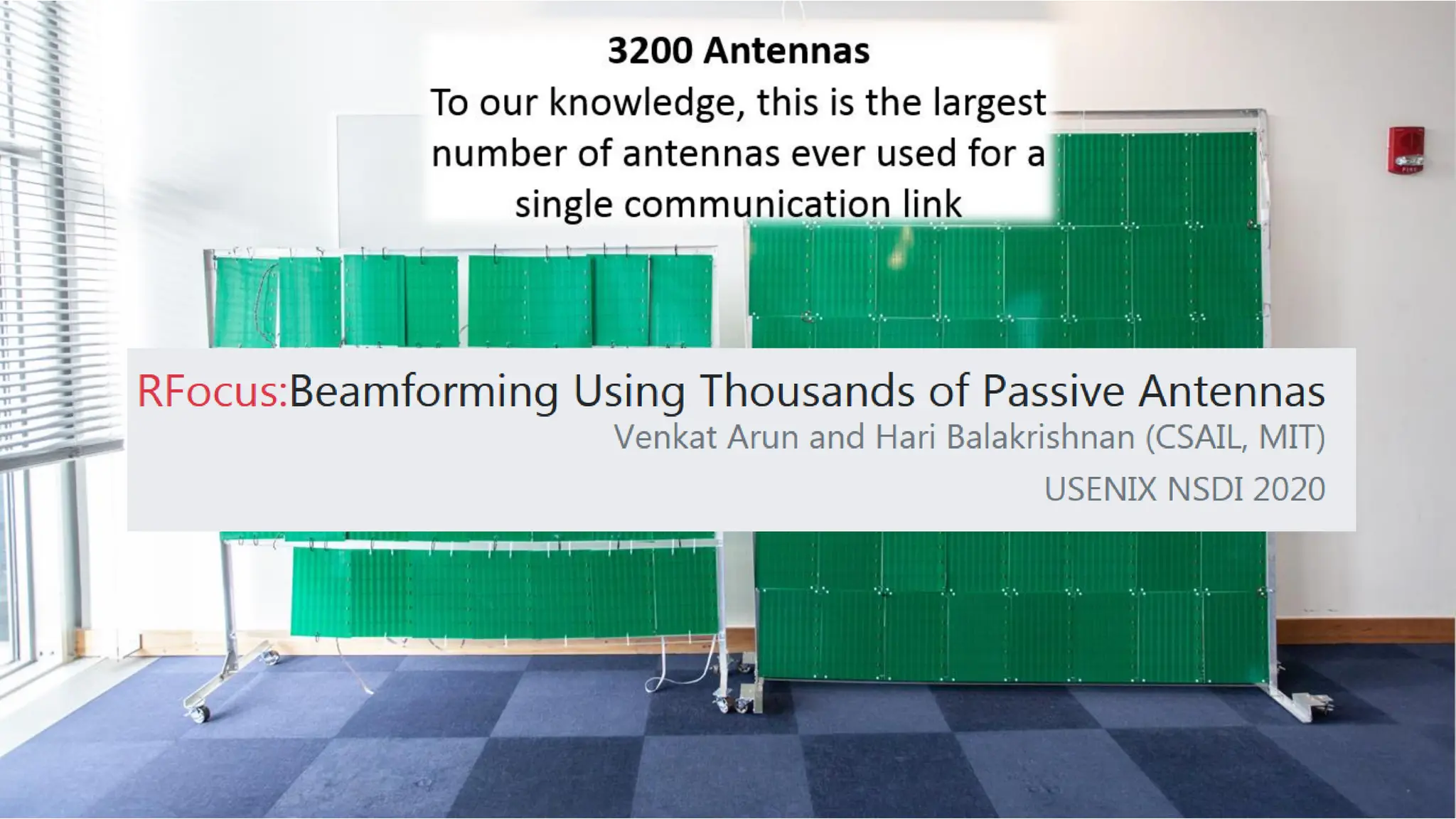

![6
[JSAC Nov 2020]](https://image.slidesharecdn.com/ris-yc-spce-sig-2021-06-2-240317121135-4db4ce01/75/reconfigurable-intelligent-surface-wireless-6-2048.jpg)








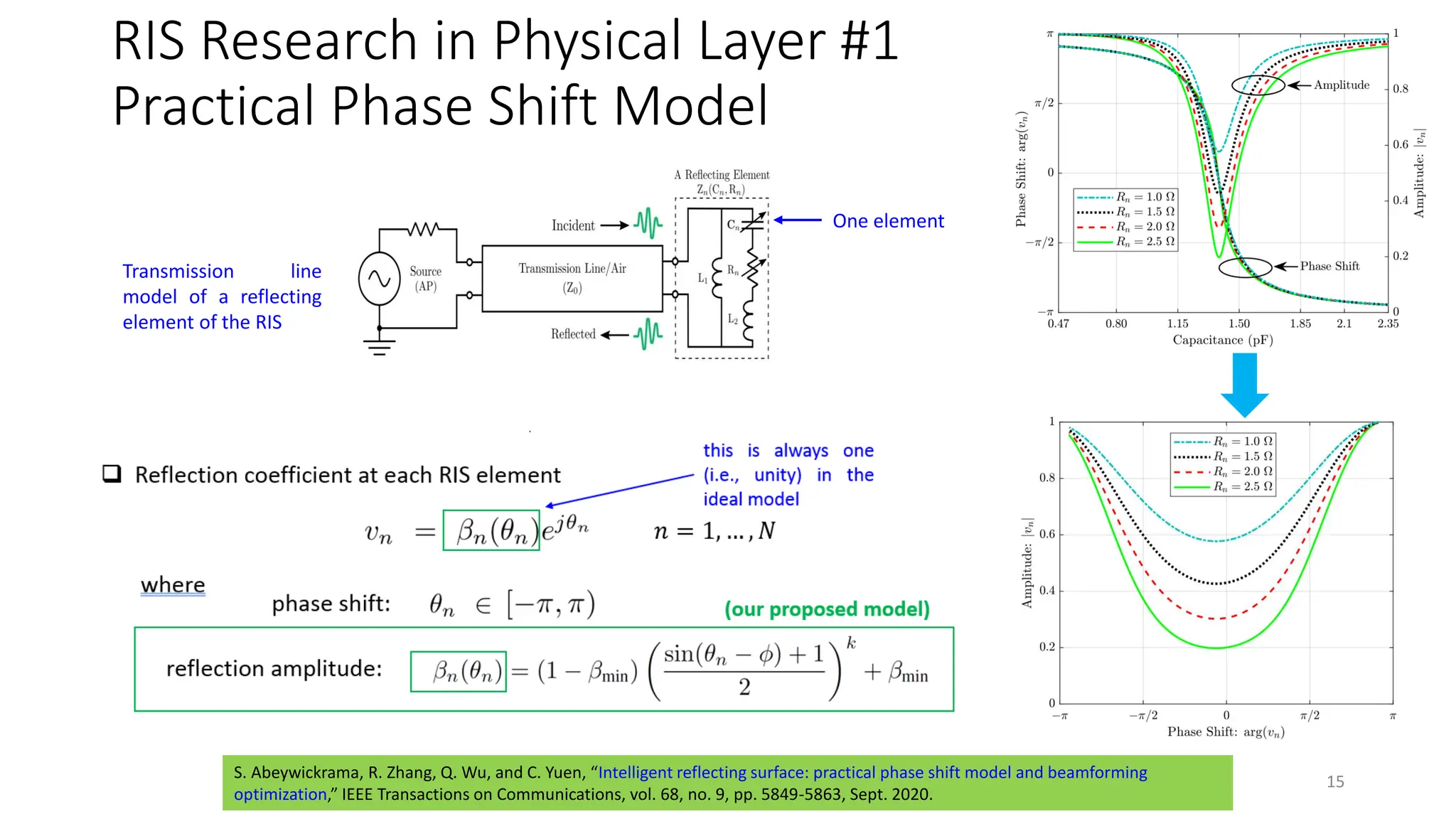




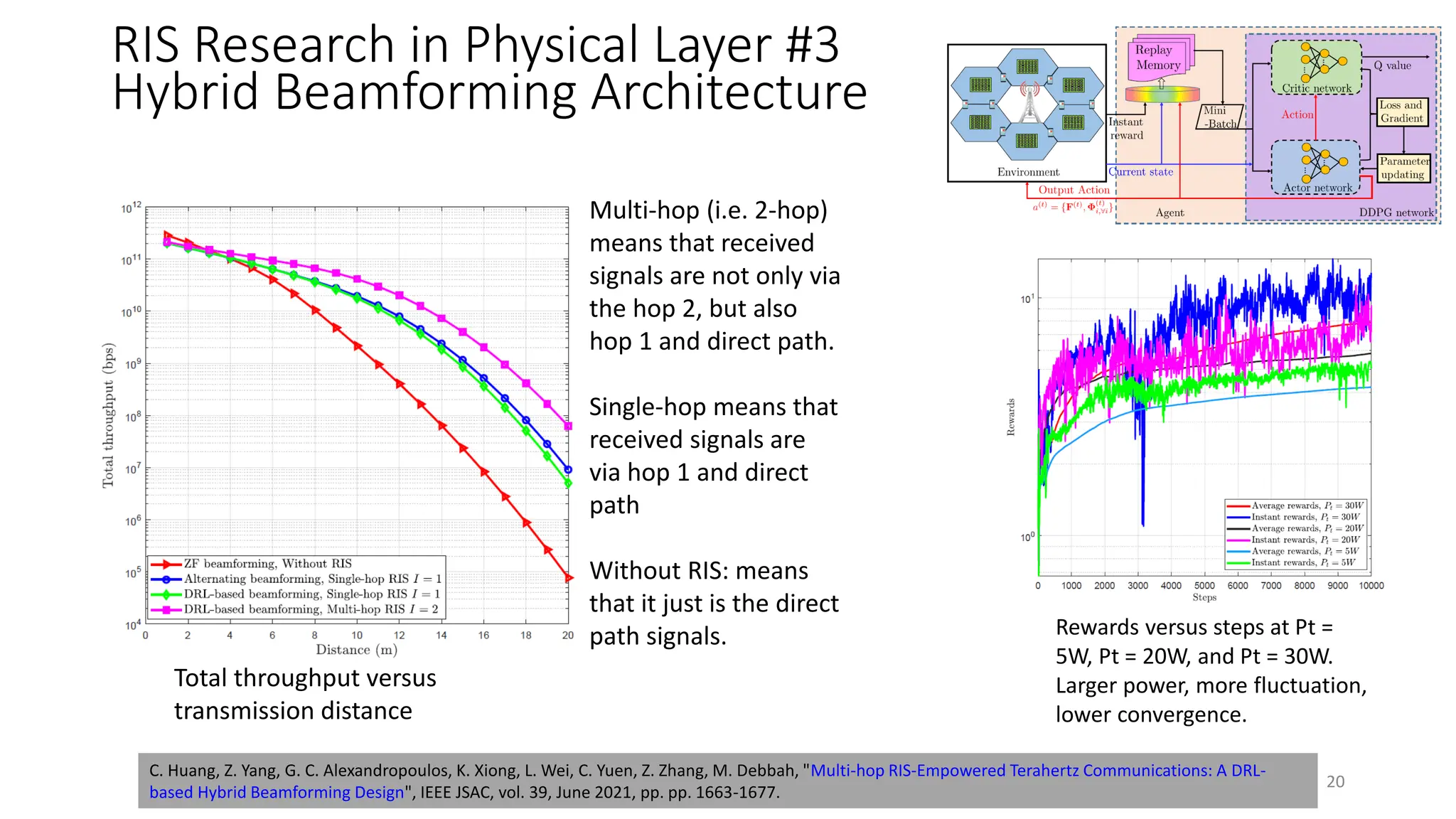

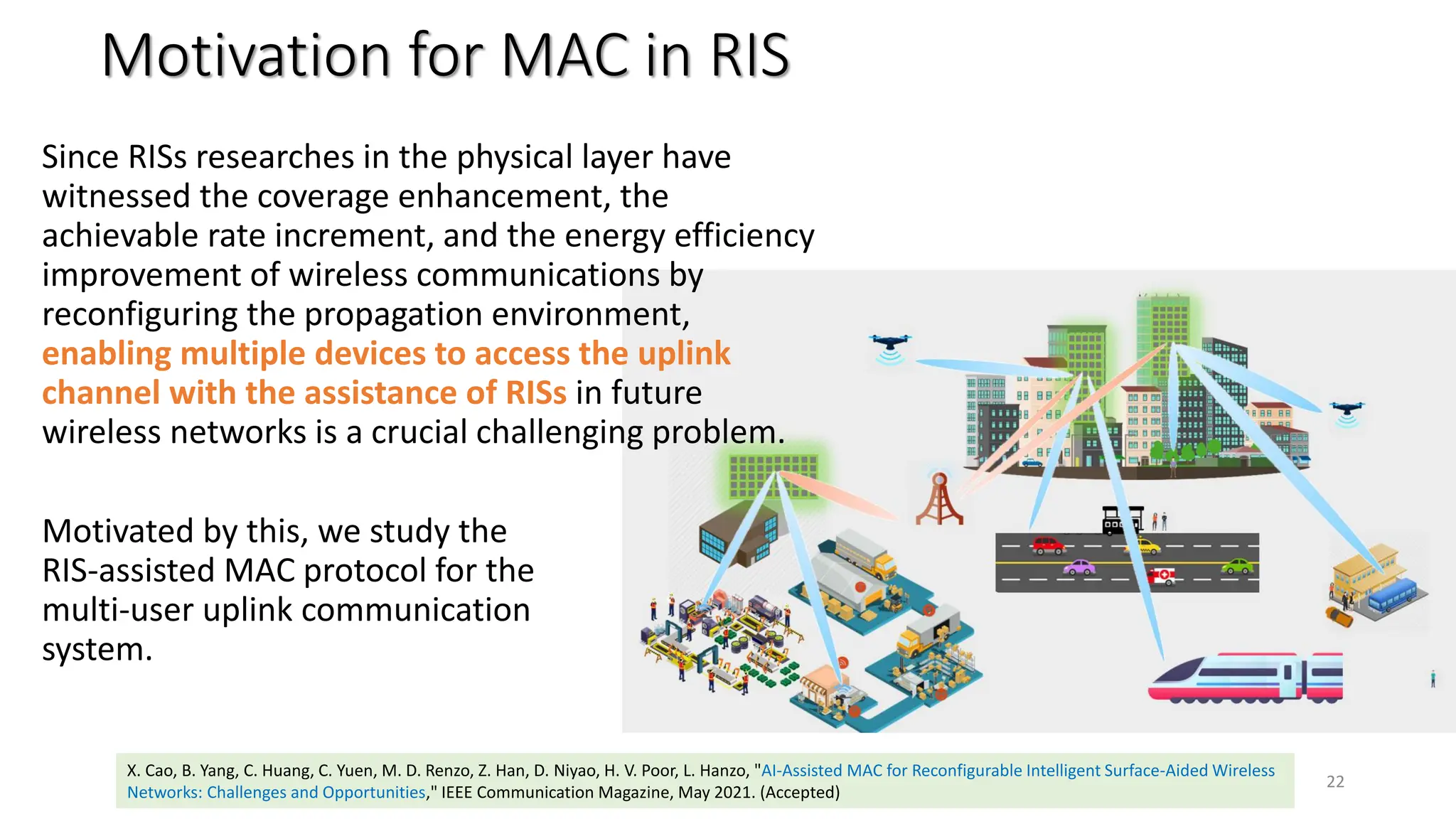






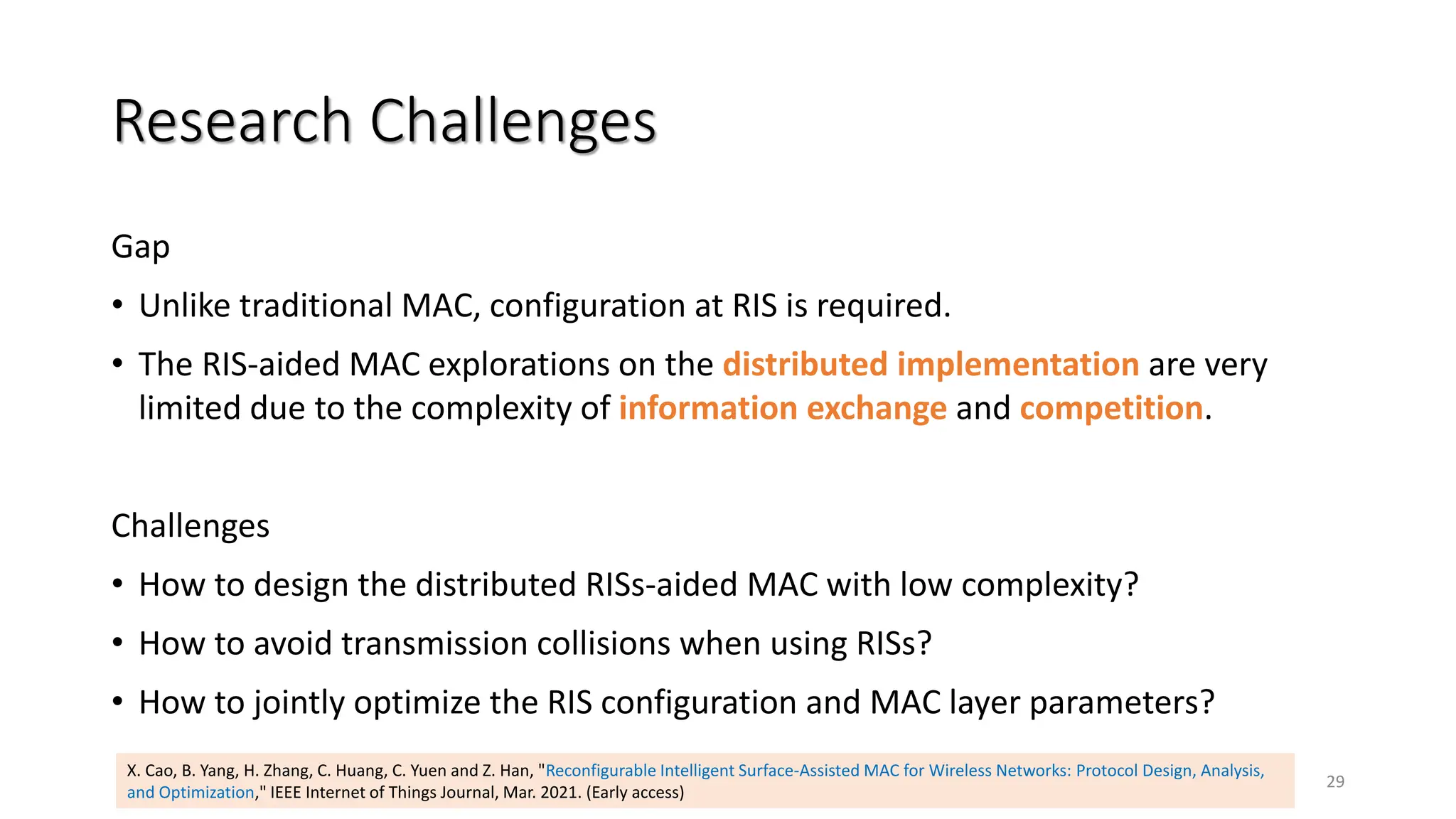
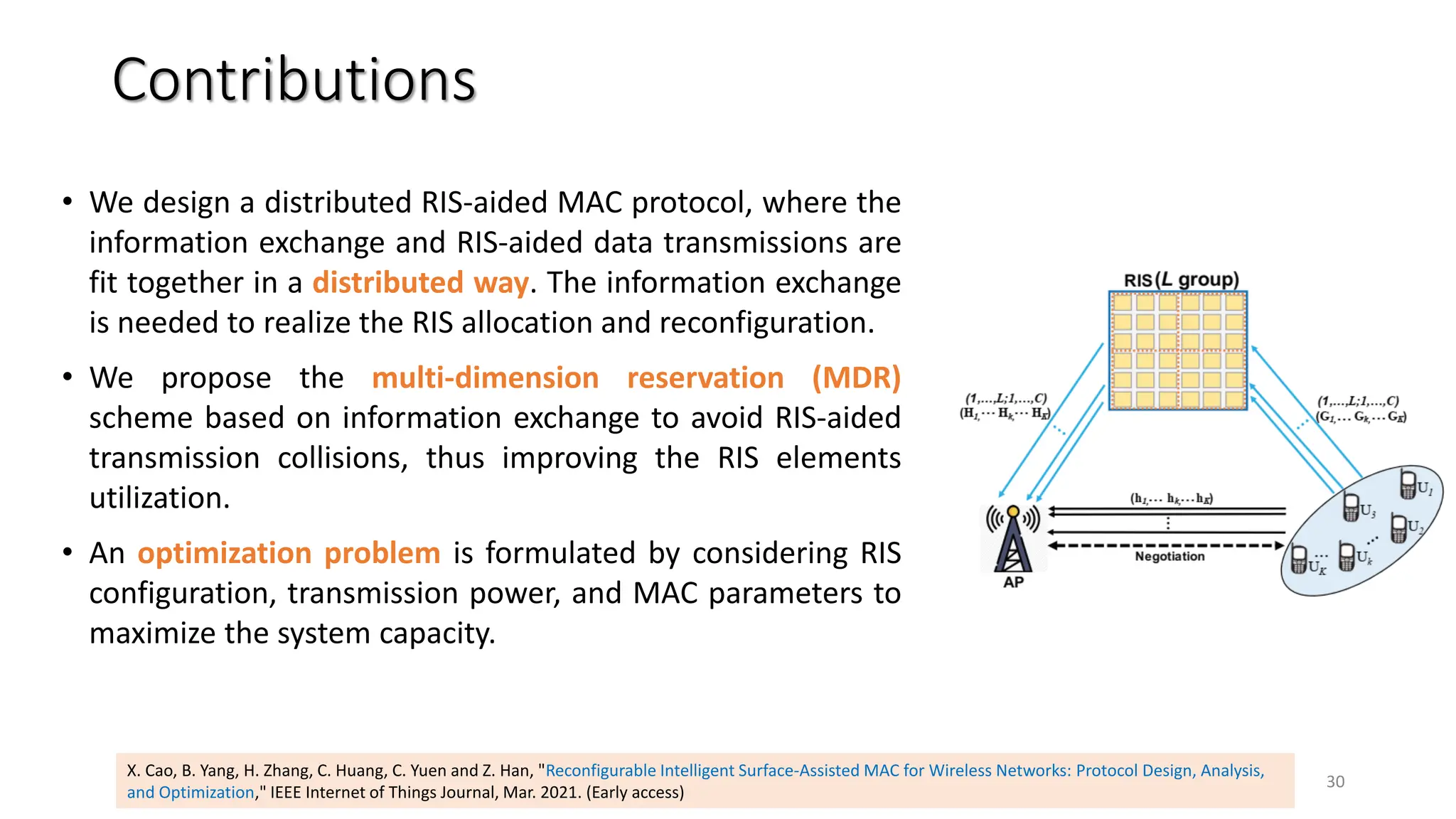





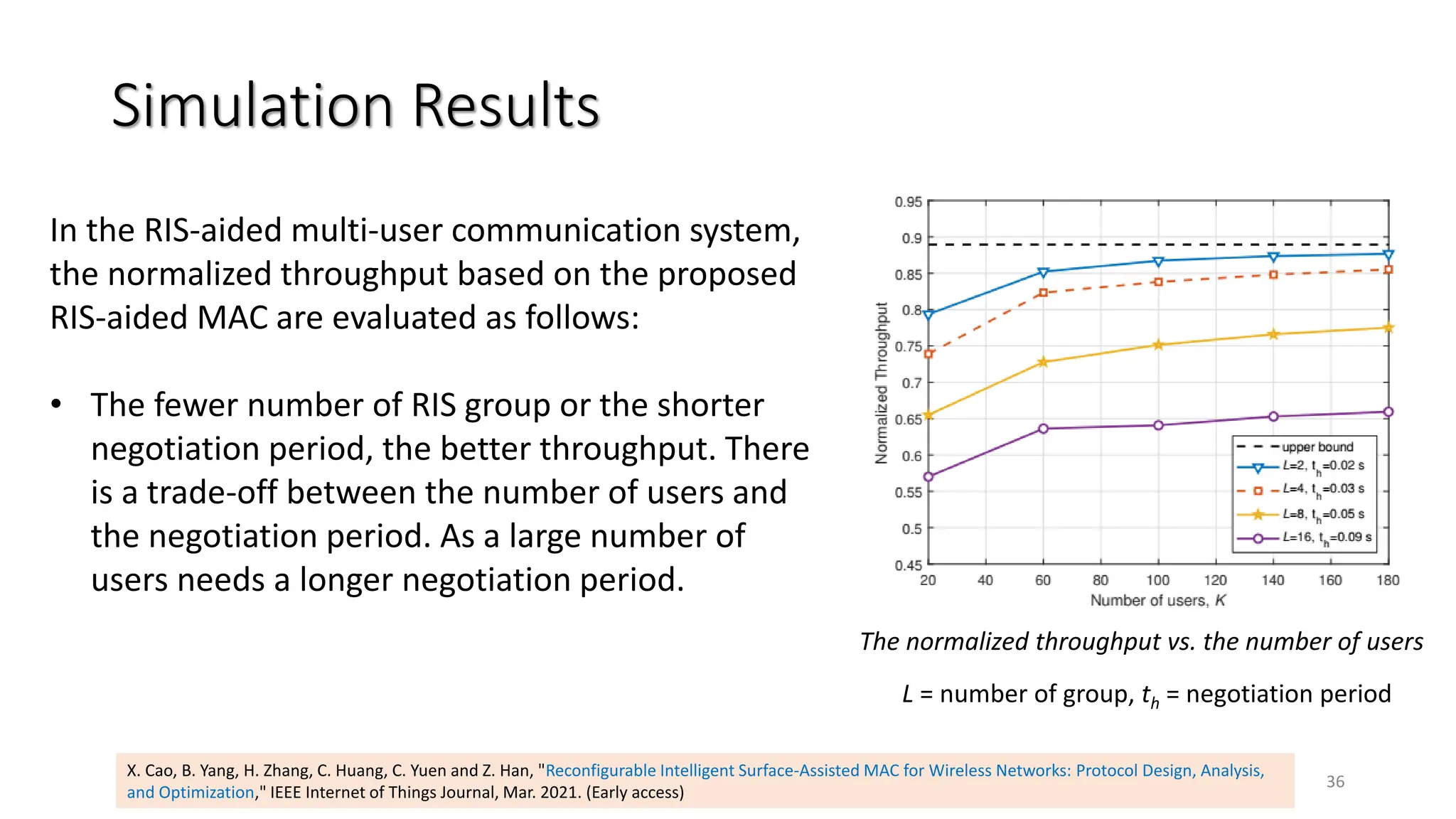
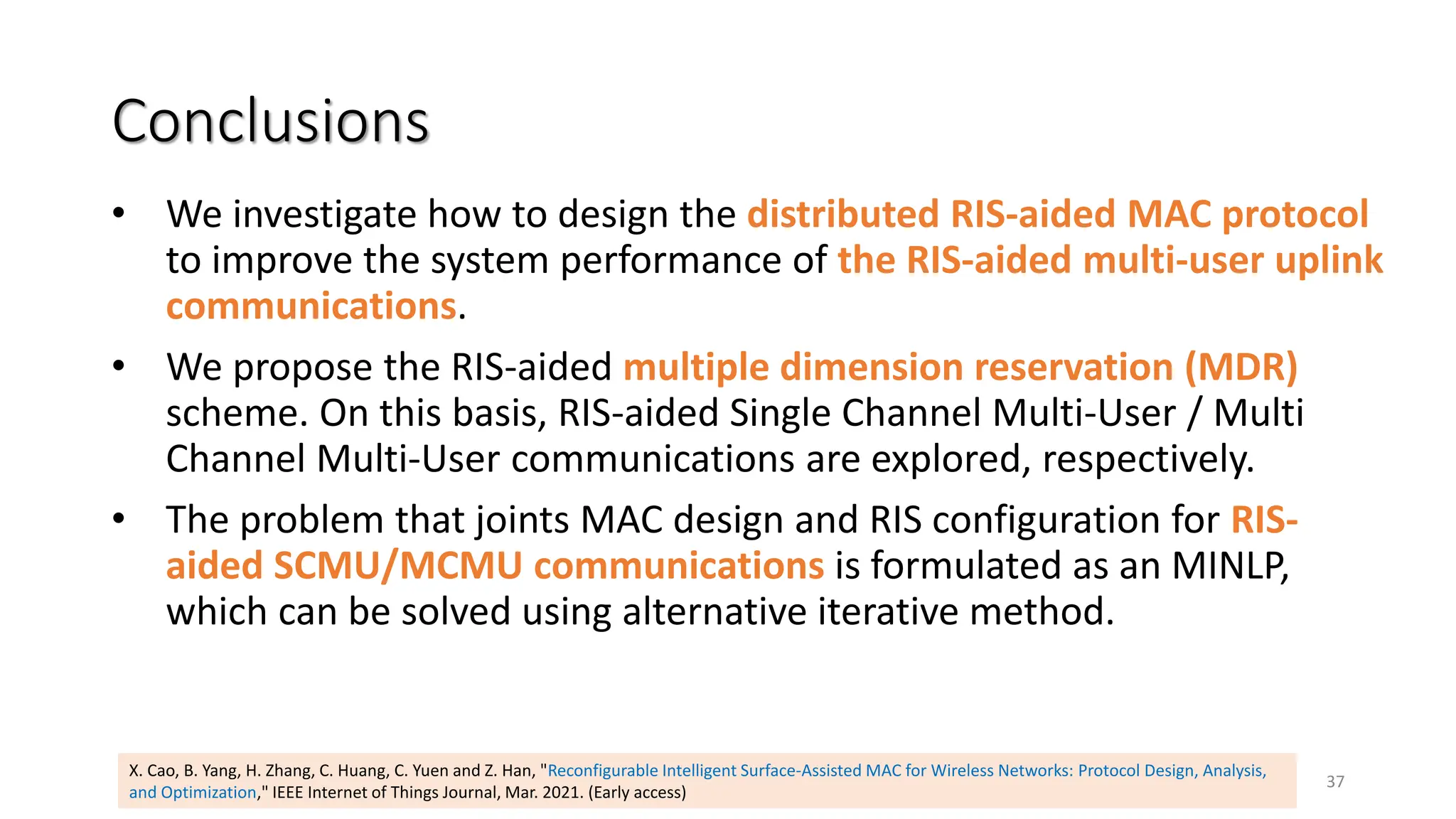



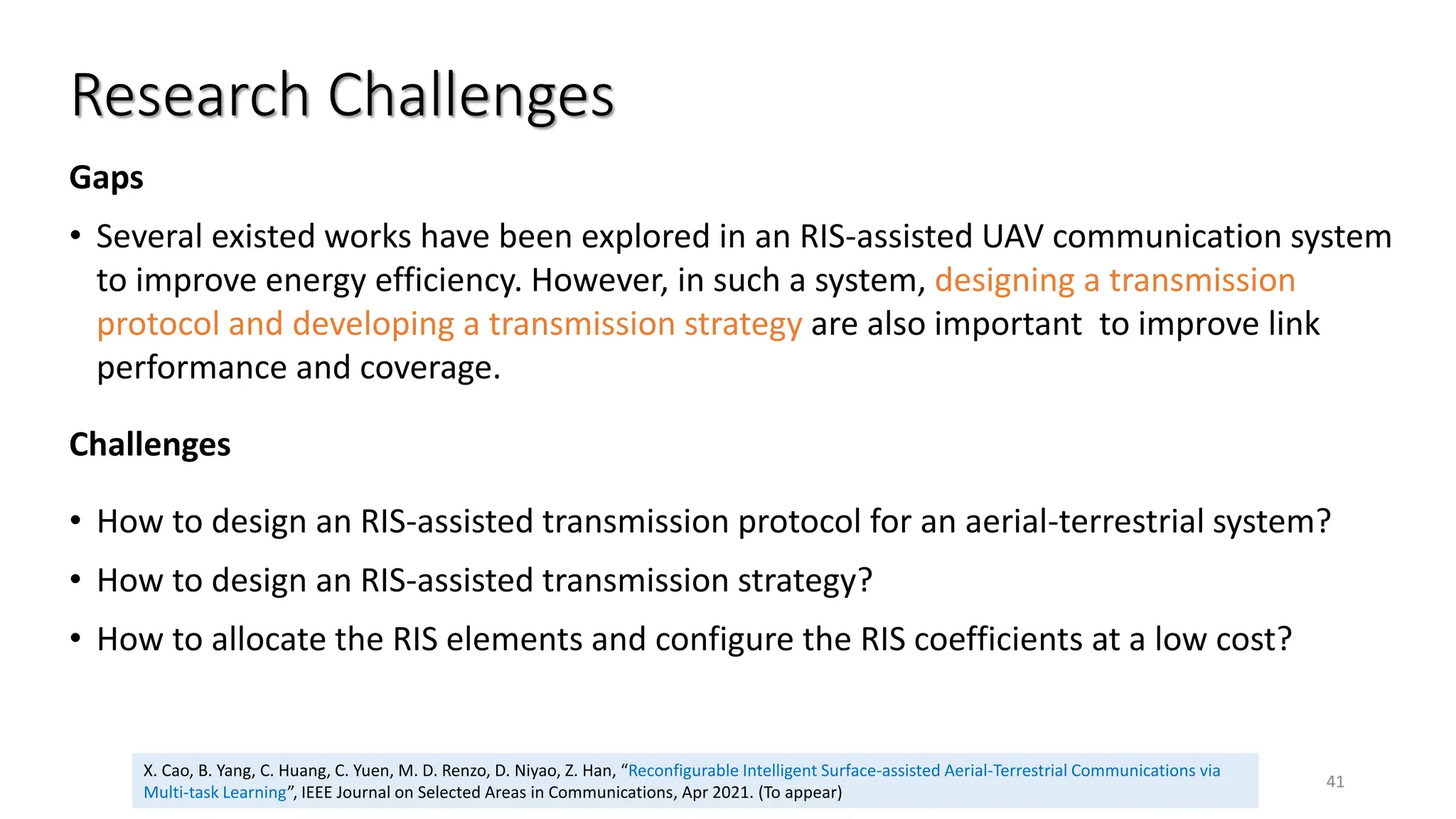
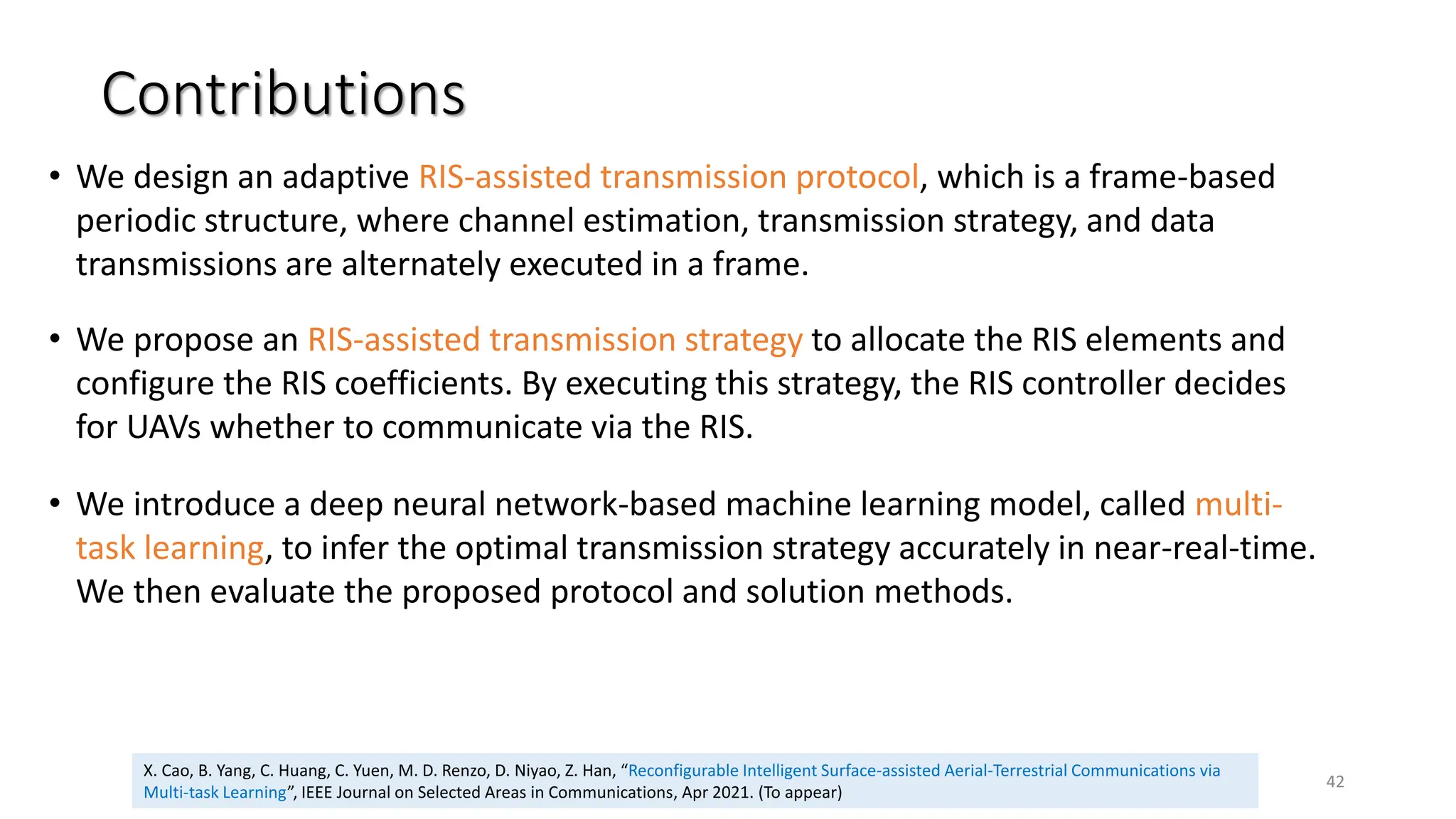





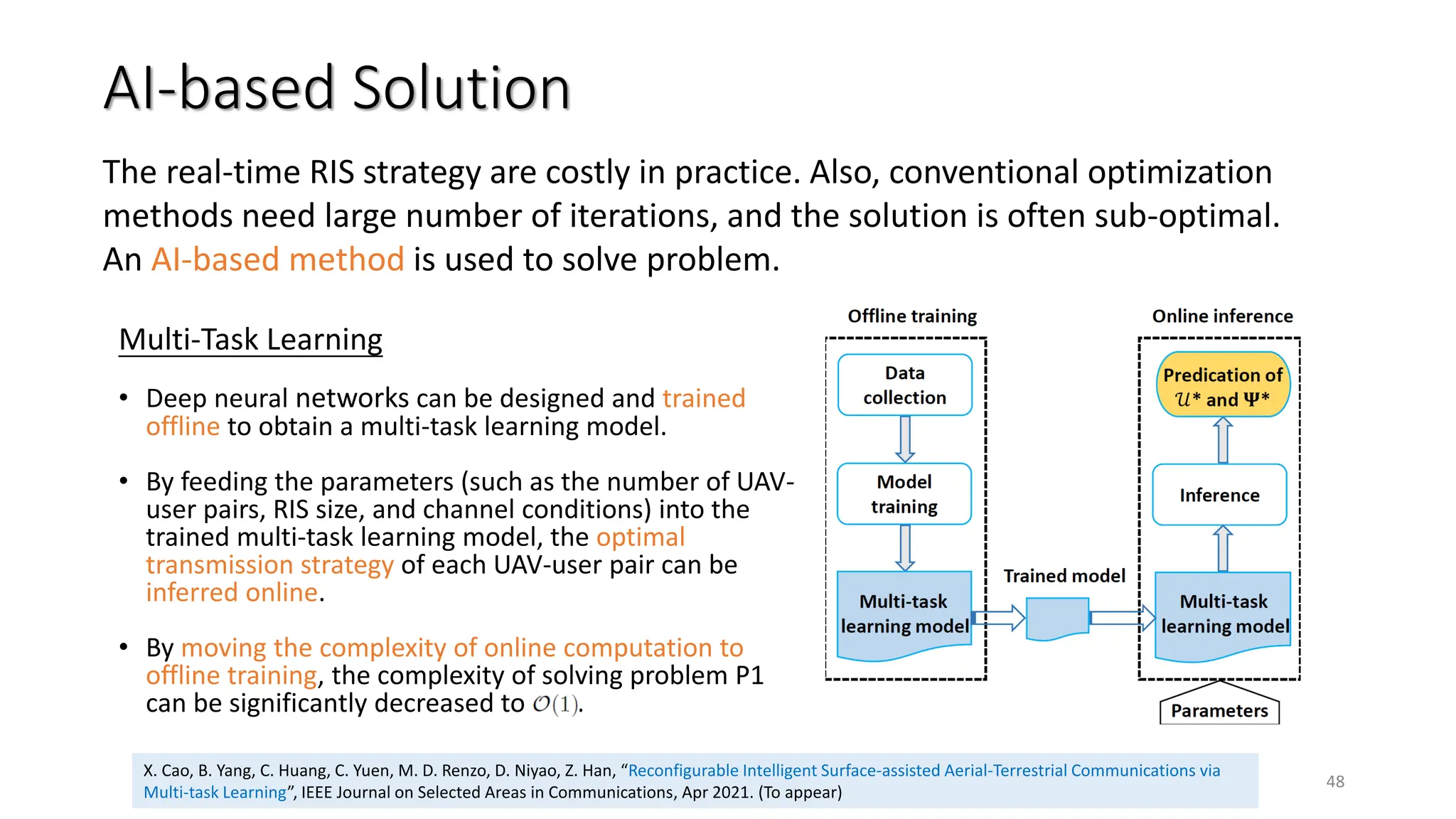
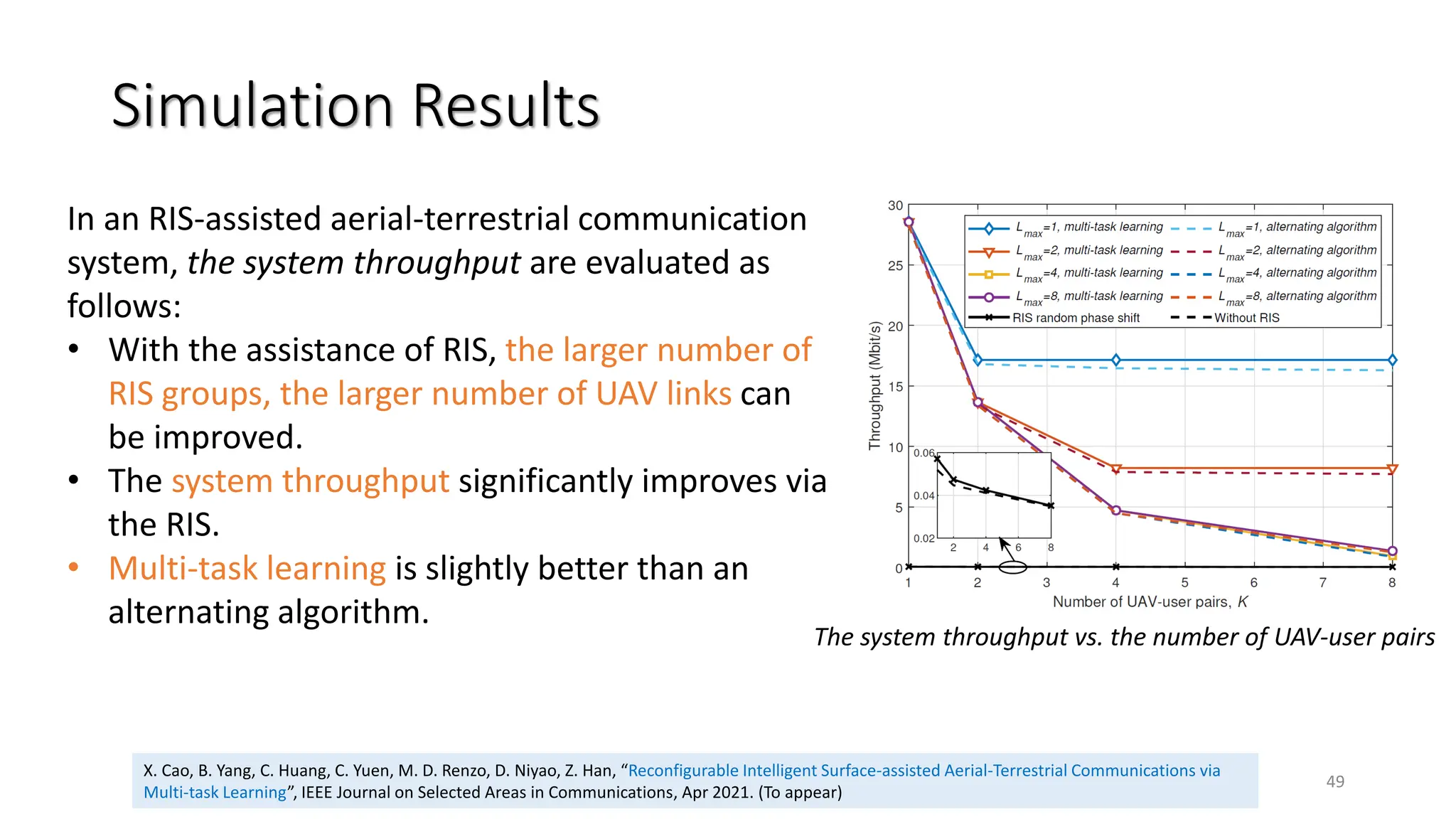










![Simulation Results
60
The achievable SINR versus the incident angle (θ)
• In Fig. 9, as θ increases, the interference contaminating the
desired receiver by reflection is reduced. Therefore, the SINR
of the ‘RIS always ON’ scheme is increasing. The achievable
SINR of the ‘RIS always OFF’ scheme reduces with θ due to the
reduction of the distance between UI and BS.
• SL-aided RIS achieve the best among the two.
The achievable SINR versus the number of RISs (K)
• The SINR achieved by the ‘RIS always OFF’ remains unchanged,
while that of the other two schemes increases with the
number of RISs.
• Compared to the ‘RIS always OFF’ and ‘RIS always ON’
benchmarks, our proposed solution improves the received
SINR from about 4.8 dB and 2.9 dB to 6.3 dB for K = 5.
Fig. 9 SINR vs. incident angle, where K=1.
Fig. 10 SINR vs. number of RISs, where PI = 10 dBm
and θ is randomly selected from [30o; 120o].
B. Yang, X. Cao, C. Huang, C. Yuen, L. Qian and M. D. Renzo, "Intelligent Spectrum Learning for Wireless Networks With Reconfigurable Intelligent Surfaces,”
IEEE Transactions on Vehicular Technology, vol. 70, no. 4, pp. 3920-3925, April 2021.](https://image.slidesharecdn.com/ris-yc-spce-sig-2021-06-2-240317121135-4db4ce01/75/reconfigurable-intelligent-surface-wireless-60-2048.jpg)




